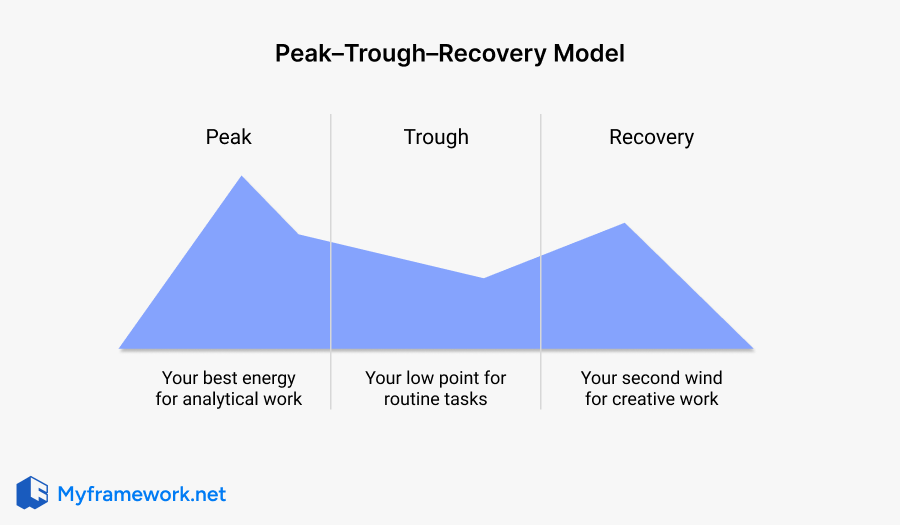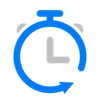Introduction
Most professionals manage their schedules by the clock. They fill every hour with tasks and push through fatigue to stay productive. Yet what truly limits performance is not time, but energy.
Throughout the day, your energy naturally rises and falls. Some hours you feel sharp and creative, while others feel slow and draining.
Don't take this on yourself; it is more than the rhythm of a human being.
Ignoring this rhythm leads to wasted effort and lower focus.
What the Model Is
The Peak Trough Recovery Model helps you understand and manage these natural energy cycles.
Developed from behavioral science research by Dan Pink, it shows how mental energy follows a daily pattern of highs, lows, and rebounds. By aligning your most demanding work with your peak periods and saving lighter tasks for your lower-energy hours, you can work smarter, stay focused, and recover more effectively.
Core Concept of the Model
In this model, Dan Pink divided a day into 3 stages, and each day follows a predictable emotional and cognitive curve:

The model reveals that productivity is not a straight line.
Peak
Usually, you reach the peak of the day in the morning. This is your high-performance window. Focus, alertness, and analytical thinking are strongest.
It is ideal for deep work, problem-solving, and decision-making. For most people, this occurs in the morning hours after waking and stabilizing.
Trough
When it moves to the second stage, energy dips and attention declines. Mistakes are more likely, and motivation drops.
The trough is not the time for complex work but for routine tasks, checklists, or short breaks that help you reset.
Recovery
Later in the day, mood improves and creativity rebounds. Logic weakens slightly, but flexible thinking returns.
This phase suits brainstorming, collaboration, or planning sessions that need open-mindedness rather than precision.
Benefits of Using the Model
The Peak–Trough–Recovery Model trains you to manage energy, not just time.
- It improves focus by scheduling the right tasks at the right moments.
- It reduces burnout by building recovery into your day instead of waiting for weekends.
- It increases self-awareness and helps you make better daily decisions.
- It supports long-term productivity by respecting how your mind and body naturally function.
By aligning work with your energy rhythm, you get more done in less time with greater quality.
Implementation Scenarios
- Personal Productivity: Plan your day around your energy curve. Do creative or strategic work during your peak, administrative tasks in the trough, and reflective work during recovery.
- Team Scheduling: Encourage teams to align meetings with shared recovery periods rather than peak hours, preserving focus for individual deep work.
- Leadership: Use peak time for decision-making, trough for communication, and recovery for coaching or ideation sessions.
- Work-Life Balance: Recognize that energy management applies outside of work too. Plan workouts, family time, or learning activities based on when you feel most present.
Takeaways
The Peak–Trough–Recovery Model helps you build a daily structure that respects your energy and attention. Once you identify your peaks, protect them fiercely. When you reach your troughs, recover without guilt. Productivity is not about working longer.


